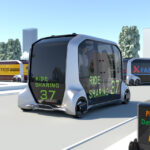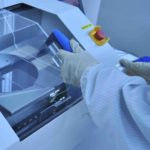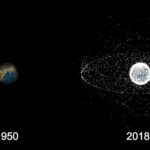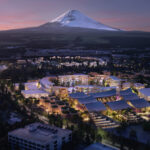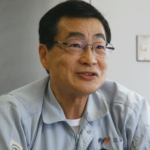Hydrogen solutions for a carbon-neutral future
With over 110 nations pledging to achieve net carbon neutrality by 2050, the quest to create a more sustainable society has taken on new urgency. At Toyota, we’ve been developing environmentally friendly cars for decades, and are working with partners around the world to reduce CO2 emissions and provide mobility solutions tailored to the needs of each region. For some, hydrogen power offers a potentially game-changing answer.

Global support for expanded hydrogen energy infrastructure
Support for hydrogen energy infrastructure is growing worldwide. In Japan, suppliers and manufacturers are working together to weave hydrogen power into the nation’s mobility infrastructure. As of December 2020, there are 137 hydrogen refueling stations for fuel cell electric vehicles nationwide.
In China, where the government has set a target of one million FCEVs on the road by 2030, Toyota is participating in a joint venture project with five local manufacturers to develop fuel cell technology for trucks, buses, and other commercial vehicles. As part of the government’s push to achieve carbon neutrality by 2060, China is aggressively working to increase hydrogen production from renewable sources and expand its hydrogen supply chain infrastructure.
In Europe, governments have indicated their intention to make large-scale investments in green hydrogen production and infrastructure development. To support these efforts, Toyota recently established a Fuel Cell Business Group in Brussels to oversee the company’s hydrogen activities and make its fuel cell technologies accessible to new and existing commercial partners throughout the region.
Initiatives to promote the use of hydrogen energy are also underway in Australia, where Toyota announced the completion of the first stage of its new Hydrogen Centre in Melbourne in April 2020. When it is fully operational, the facility is slated to become the nation’s first zero-emission refueling station to produce hydrogen from wind and solar power.

Creating hydrogen from water: a novel new approach to zero-emission power
Hydrogen is the most abundant element in the known universe. As a fuel source, it is virtually inexhaustible. And with recent advances in hydrogen production and delivery systems, the world is closer than ever to realizing the dream of clean, renewable energy.
One of the most promising hydrogen production technologies is electrolysis, which uses excess power from wind, solar, or tidal generating systems to create hydrogen from water when demand for electricity is low. And unlike electricity, hydrogen can be stored and transported easily, making it possible to create energy delivery ecosystems that are optimized to the scale of demand and consumption patterns.
In addition to powering fuel cell electric vehicles, hydrogen also holds great promise as a carbon-free fuel source for auxiliary power and combined heat and power systems, as well as energy-intensive industrial processes such as steel production.

Hydrogen-powered vehicles like the Toyota Mirai can be refueled in minutes. And at refueling stations like the one at the Toyota Hydrogen Centre in Melbourne, Australia, the fuel can be produced through electrolysis using only water and excess electricity from solar and wind power generators—so the entire process is emission-free.
Mirai ― the future is just beginning
In December of 2020, Toyota announced the introduction of the second-generation Mirai FCEV. With sleek new styling, the new Mirai isn’t just beautiful to look at, it also represents a major evolution in zero-emission driving performance. It is a car entrusted with a mission, as a starting point toward the full-scale popularization of hydrogen to meet the demands of society across a wide range of applications.

The second-generation Mirai FCEV is a zero-emission passenger sedan of tomorrow that is available today. Powered by an advanced new hydrogen fuel cell system and high-performance electric motors, it offers increased power and acceleration, extended range, and a truly thrilling driving experience.
Toyota is currently boosting its fuel cell stack production capacity by ten-fold, and has increased stack efficiency and configuration flexibility to enable hydrogen power to be applied not only to passenger cars, but also to a wide range of commercial vehicles. In Japan, it has already sold 100 SORA fuel cell buses, and is working with major convenience store chains on a pilot project to provide FCEV fleet vehicles for goods delivery. In the U.S., it has teamed up with a local manufacturer to develop semitrailer FCEV trucks for container freight hauling.
With the introduction of the second-generation Mirai, Toyota is pointing the way to the future. Not just for fuel cell vehicles, but for the entire hydrogen value chain that is key to the achievement of carbon neutrality. As more and more of these remarkable cars take to the road, they are marking the way forward to a brighter tomorrow for all humankind.

A zero-emission semi-trailer truck tractor co-developed by Toyota and the Kenworth Truck Company in the United States. Capable of hauling loads of up to 80,000 pounds, these trucks are already being used in California to transport cargo across the Los Angeles basin and to inland cities such as Ontario and San Bernardino.

global.toyota

